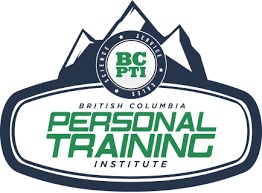It’s January – I’m getting myself together. I put away my Christmas decorations last week. I reorganized my tea drawer. I moved a bookshelf into my office and unpacked a box of leadership develop & fitness books. And of course I’ve been focused and consistent with my meal prep and workouts. Sounds good right? Well I was also able to do one more important thing towards my health & fitness yesterday – I went to the dentist for my bi-annual cleaning. What does a healthy smile have to do with fitness?
Well, I was lucky enough to be part of a generation where having straight, pearly white teeth and a beautiful smile was a priority. I got braces for the first time when I was in Grade 4 and because I was actually one of the last of my friends to get them, I was thrilled to finally be able to join the trend of changing the elastic colours for each holiday. Black & orange for Halloween. Red & green for Christmas. Blue & yellow, my team’s colours, for championship time. For the next 5-6 years, I ate mushy food when I got the wires tightened, I rolled my eyes at the lectures my orthodontist gave me about flossing with that little plastic loop that would get the floss under the wires and I had multiple teeth pulled out, all for the pursuit of that photo-friendly smile.
Pause for a long overdue shout-out: “Hey Mom – thanks for the time, effort and expense you put into my smile. I definitely didn’t thank you properly for it when I was a teenager!”
OK, but how does a healthy mouth affect your fitness?
Oral health (especially your gums) is actually closely tied to overall health.
From https://www.dentalhealth.org/healthysmile
“Research has found that the number of teeth we have is a strongly linked to how long we will live. Those with 20 teeth or more at the age of 70 had a considerably higher chance of living longer than those with less than 20 teeth.
When we have gum disease, the bacteria from our mouth can get into the bloodstream. It then produces a protein which causes the blood to thicken. This means that clots are more likely to form, and the heart is not getting the nutrients and oxygen it needs, resulting in increased risk of a heart attack.
Similarly, gum disease can also cause inflammation of the blood vessels, blocking the blood supply to the brain, leading to a potential stroke.
New research has also shown that we are more likely to develop diabetes if we have gum disease.
By keeping our teeth and gums healthy we are more likely to reduce our risk of certain cancers, particularly in women, as well as some forms of dementia.
New research, which examined data from 65,000 post-menopausal women between the ages of 54 and 86, found those with a history of gum disease were 14% more likely to develop cancer. Of these, one in three developed breast cancer while there was also a highly-increased risk of lung cancer, oesophageal, gall bladder and skin cancers.
Those who have healthy gums are also 70 percent less likely to develop Alzheimer’s disease than those who have suffered from gum disease over a long period of time.”

But it’s not just a one-way street. Being fit and healthy also improves your oral health!
From https://www.perio.org/consumer/stay-in-shape
“The health complications of being overweight, such as increased risk of heart disease, Type 2 diabetes and certain cancers, have long been reported. Health care professionals often urge patients to manage their weight and strive to get physical exercise each day to achieve and maintain overall health. And now, researchers have now uncovered another benefit of maintaining a fit lifestyle: healthy teeth and gums.
In a study published in the August issue of the Journal of Periodontology, researchers found that subjects who maintained a healthy weight and had high levels of physical fitness had a lower incidence of severe periodontitis. Using body mass index (BMI) and percent body fat as a measure of weight control, and maximal oxygen consumption (VO2max) as a measure of physical fitness, researchers compared subjects’ weight and fitness variables with the results of a periodontal examination. Those with the lowest BMI and highest levels of fitness had significantly lower rates of severe periodontitis.”
So let’s wrap this up with a few mouth-focused tips to keep you moving towards your 2020 fitness goals!
1. Chew your food! Proper digestion starts by mechanically breaking food down into a mushy paste in your mouth. This mixes saliva throughout the food and makes it easier for chemical digestion in the stomach to occur properly. No more swallowing chunks of steak. Slow down, chew your food, sip water as you eat and not only will you digest food better but you’ll also have improved taste, satiety and satisfaction. All of this leads to eating less food but still feeling satisfied!
2. Brush at least twice a day and floss daily. Food that gets stuck and left behind turns into plaque. The plaque is so sticky that it keeps the acids in contact with your teeth, in time breaking down the enamel and leading to tooth decay. Plaque buildup can also lead to gum disease – first gingivitis, the tender and swollen gums that sometimes bleed. If your gums bleed a bit when you floss that’s a big red flag that gum disease is imminent! I’ve noticed big improvements since switching to an electric toothbrush and not brushing my teeth like I’m trying to scrub gum off the bottom of my shoe!
3. Reduce/limit acidic foods. Not only do these foods break down tooth enamel but a lot of the foods highest on the acidic scale aren’t all that good for you anyway! My dentist gave me a list of sports drinks, fruit juices, sodas and common foods and beverages that are high in acidity. Here’s a sample:
Sports Drinks: Gatorade, Powerade, Vitamin Water, Monster, NOS, 5-Hour Energy, Red Bull, Rockstar, Amp
Juices: ok there were a ton. Here are the minimally erosive options: Tomato juice, orange juice with calcium, V8 vegetable juices
Sodas: again, a lot of them are highly acidic. But A&W Root Beer and Canada Dry Club Soda has better scores (you’re welcome!)
Common Foods & Beverages: ciders, beer, wine, apples, grapes, citrus fruits, vinegar, mustard, cranberry sauce & effervescent Vitamin C tablets!
TIPS: whitening toothpaste is highly abrasive so it’s not the best choice, especially if your enamel is already starting to wear thin. Bleach strips are actually ok but don’t brush your teeth right after using them. Wait at least 30 minutes.
And if you HAVE to drink something acidic, dentists recommend using a straw to minimize contact with your teeth (maybe a metal one to save the turtles!)
There you go – here’s to a fit, healthy & happy 2020!
Interested in learning more about our program? Want to join our next class in February 2020? Click here!









